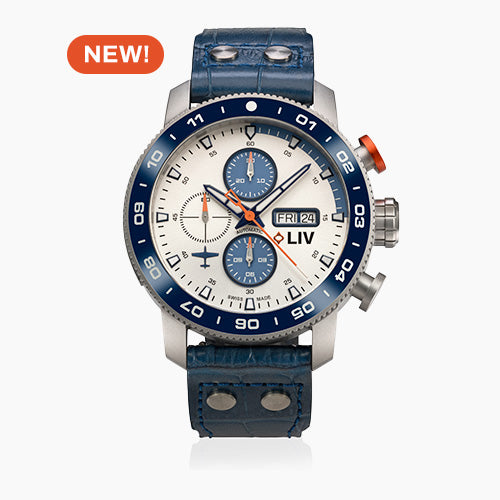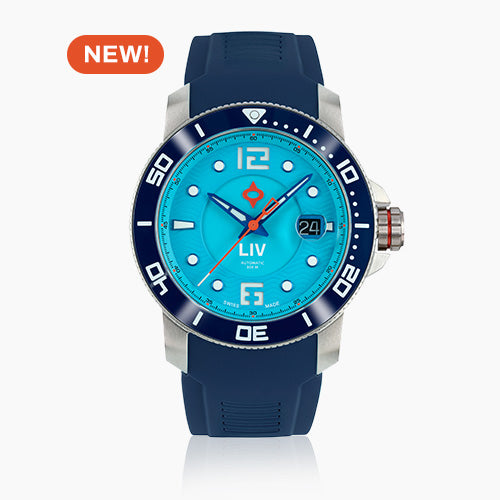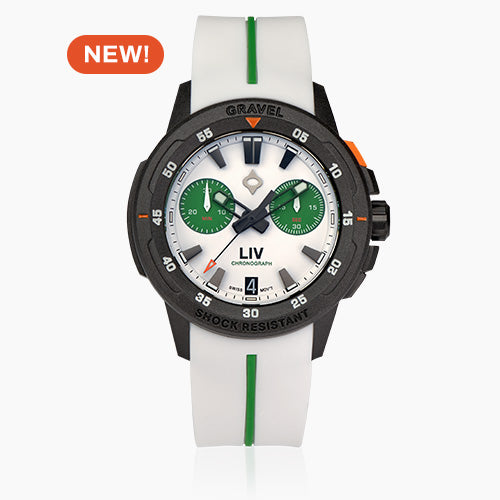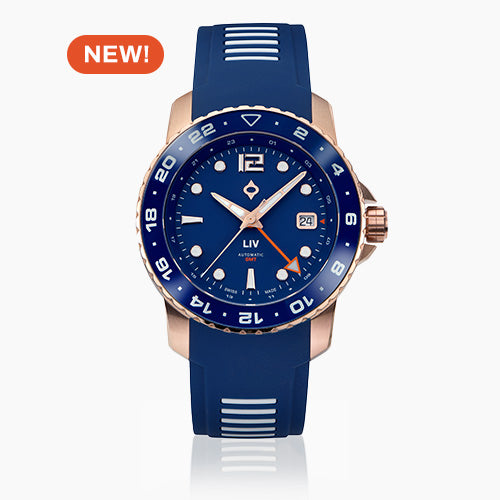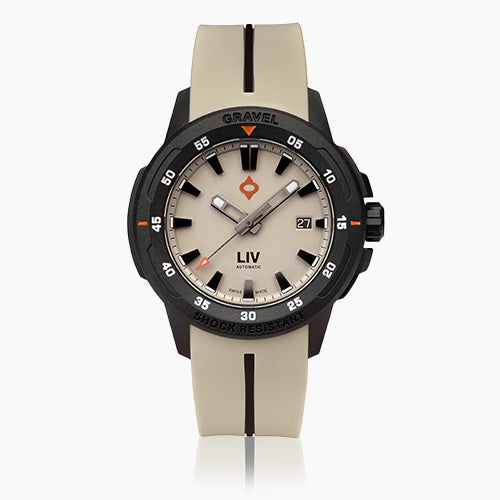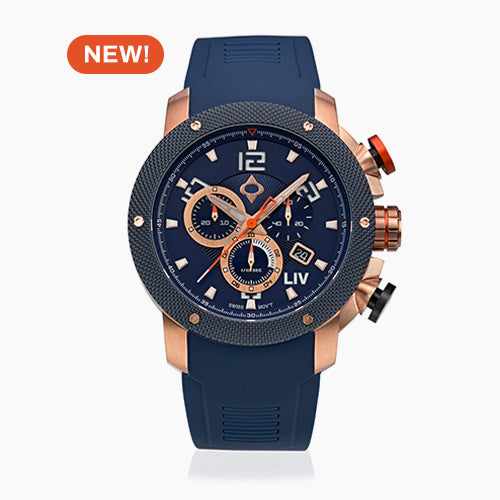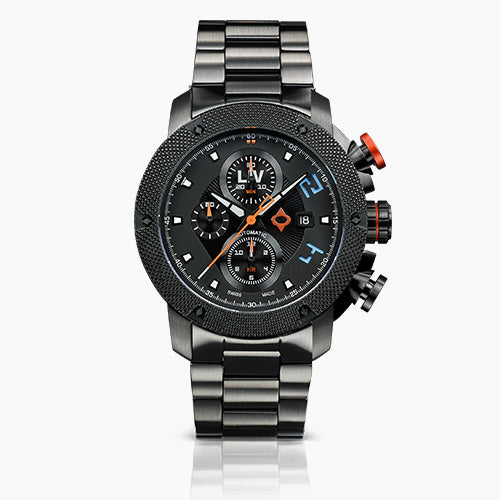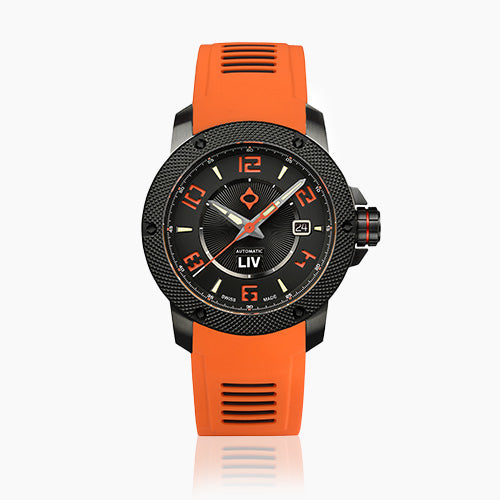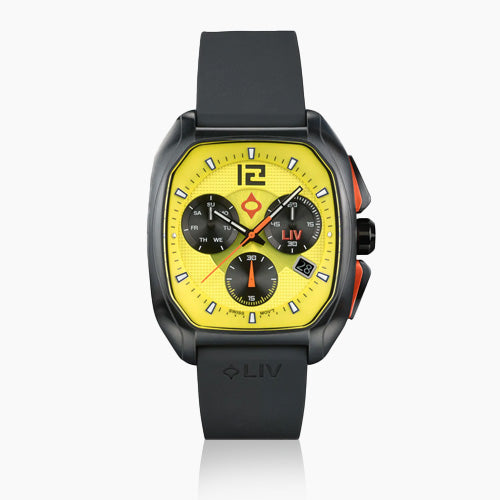
Demystifying Dive Watches: What to Know Before You Go for a Swim
Share
Take a dive into the deep history of an iconic watch.
Dive watches are among the most hallowed and sought-after niche models in the world of watches. The pursuit of the best dive watch dates back almost a century. Rolex was the groundbreaking watch company in this regard: the iconic Swiss watchmaker released its Oyster model in 1927. Horologists acknowledge it as being the world’s first water-resistant watch.
By the late 1930s, Panerai had developed the Radiomir, which was worn by divers in Italy’s Royal Navy. It was a watch designed to be worn for long periods of time underwater.
Dive watches have come a long way since then. This article will seek to explore some of the fundamentals and more interesting aspects of this fascinating type of watch. This article won’t incorporate watches made for diving with mixed gas, nor will it include references to dive computers, which are not technically timepieces.

What is a dive watch?
The diving, divers, or dive watch is and has been one of the most popular types of wristwatch people buy. It might be safe to say that the vast majority of these watches will never be used for their intended purpose, providing safety to a diver while they are at depth.
What is it that makes a watch a dive watch? The International Organization for Standardization (ISO) has established the criteria for a watch, or timepiece, to be classified as a dive watch, ISO 6425. Compliance is voluntary.
Here are four that you should look for in choosing a dive watch for your collection, not listed in any particular order.
- Water resistance to 100 m (300 feet), as measured using specialized equipment.
- Equipped with a diving (elapsed) time indicator. Commonly a unidirectional rotating bezel with indentations to facilitate operation wearing diving gloves.
- Adequate readability/visibility at 25 cm (9.8 in) in total darkness, achieved by the use of lume material on the bezel, watch hands, and watch face.
- Corrosion-resistant case and strap materials, especially for saltwater diving. 316L typically meets the necessary standards here.
There are more characteristics outlined in ISO 6425, but making sure your watch has at least these four will meet most casual diving requirements.
Why a dive watch?
It may seem like stating the obvious, but diving to the depths of an ocean, sea, or even deep lake can mean submerging into near-darkness. Hence there is value in having a timepiece that is easily viewed in such an environment.
Fundamentally, a dive watch allows a diver to monitor how much time has been spent underwater. Most importantly, a diver can then better know how much air they should have left in their breathing tank. As such, durability and construction are the two most important features of a dive watch.
A dive watch allows a diver to monitor how much time has been spent underwater.
What makes a dive watch a ‘dive watch?’
Dive watches have some distinctive aesthetic features, which should make them instantly recognizable to the knowing eye. These include:
- They tend to be larger in diameter (around 42mm or 1.65 inches);
- They have a rotating bezel;
- They have a well-built, solid-looking, and sturdy case; and
- The strap is made of metal or rubber.
Berner’s Illustrated Professional Dictionary of Horology is an excellent starting point as to what constitutes a dive watch. It defines a dive watch as "a watch designed to withstand immersion to a depth of at least 100 m and to satisfy requirements specified in ISO standard 6425."

The ISO 6425 standard for ‘Divers’ watches,’ as formulated by the International Organization for Standardization, was first released in 1982 and last updated in 2018. The current 7-page standard outlines the international requirements for what constitutes a ‘water-resistant watch’.
The ISO standard stipulates that it “specifies requirements and test methods for divers' watches. Saturation divers' watches for use in deep diving are addressed in Annex 1 of the standard”.
And therein lies a little problem: very few watches meet all the requirements of the ISO standard.
However, the ISO standard is a good starting point, if only to raise factors you may not have considered. It can also allow you to decide whether you need to invest in a dive watch that is ISO-certified.
So, what does the ISO standard stipulate as factors essential to a dive watch? Sections 6 and 7 of the standard provide most of these factors, which include:
- The time on the watch face must be visible at all times, with the minute’s hand clearly distinguishable from the hour hand.
- The watch must be equipped with a device that the diver can use to pre-select up to 60 minutes of time.
- The time set on the pre-selected device must be visible.
- The above can be in the form of a rotating bezel or a digital display.
- Said display must show 60 minutes with markings indicating every 5 minutes.
- The watch-keeping time (i.e., in good running order) must be clearly visible.
- Battery-powered watches must have a visible low-battery indicator.
- All the above requirements must be visible at a minimum of 10 inches (25 cm) at a depth (i.e. in the dark).
Test-related requirements:
- Salt-water resistance must be tested by which the watch is placed in a sodium chloride solution of 1.05 ounces per 0.26 gallons (or 30 grams per liter) for 24 hours at 64 to 77ºF (or roughly 18 to 25ºC). The watch case should thereafter be inspected for adverse changes, such as oxidation, as well as moving parts tested for functionality.
- There must be a test of resistance to thermal shock. In this test, the watch is immersed in hot water (at 104ºF or 40ºC), then placed in cold water (at 41ºC or 5ºC), and then back into hot water. Here too, the focus is on whether moisture has entered the watch.
- There is also a complex ‘reliability underwater’ test, which essentially tests whether the watch can withstand undue leakages.
- A further test is that for shock-resistance, which is akin to the watch being dropped from a height of one meter onto a hardwood floor. It too is quite a complex test in its execution.
Suffice to say that failure of any of these tests means the immediate failure of that watch model being designated as a dive watch.
A watch that passes all of these ISO-mandated tests has earned the right to be marked with the word ‘Divers’ followed by the depth rating in meters. An example would be 'Divers 300m.'
A watch that passes all of these ISO-mandated tests has earned the right to be marked with the word 'Divers.'
Lume & underwater visibility
The word ‘lume’ refers to the luminescent material applied to a watch dial (face) so that the hands and indices (or numerals) on the face are illuminated in the dark, i.e. at depth. This luminescence used to be made of radioactive materials such as radium and tritium in the past. Fortunately, non-radioactive luminescent paint such as SuperLuminova is used today.

The use of radium in watch- and clock-making, and the health risks involved, is detailed in the 2017 book Radium Girls by Kate Moore. The practice ceased in 1968.
As stated before, the primary feature of a dive watch is the ability to check time in the darkness of underwater. This is especially relevant when diving at night, as well as for other dives such as deep-water cave or canyon diving, the exploration of underwater wrecks, and so forth.
Dive lights are needed in such dives, of course, but an illuminated watch as a quick reference timing check can be very useful.
An interesting aspect of lume is what colors are preferable. Some watchmakers insist that orange is particularly helpful as lume on dive watches. However, the colors of the light spectrum fade as a diver descends, thereby rendering bright colors such as orange and red into a dull gray.
It is believed by some that yellow and blue are the colors that remain most visible at greater depths. However, many divers believe that contrast between the dial and hour and seconds hands is most important. As such, for some divers nothing beats thick white hands against a black watch dial for a dive watch.
Key components of a dive watch
There are two components to any dive watch worth discussing here: the movement and the rotating bezel.
The movement
We here at LIV Watches have written in detail regarding watch movements, as can be seen at on our blog. For dive watches, automatic movements are undoubtedly the most popular. There are two main reasons for this:
Firstly, automatic watches are easily ‘wound’ from the sheer movement of arms and hands necessary when swimming underwater.
Secondly, an automatic movement negates the need for a battery, which is more susceptible to moisture and damage inside a dive watch.

before a dive, the diver should align the 12 o’clock bezel marker with the minute hand. This allows for ‘elapsed’ time of up to 60 minutes to be ascertained by a quick look at the bezel relative to the minute hand. It is the reason why the bezel usually only turns in one direction.
 This configuration explains why the minute hand is so thick and prominent on a dive watch. The 60-minute time-frame afforded by the rotating bezel is ideal in that most standard scuba dives take up to 50 minutes in duration.
This configuration explains why the minute hand is so thick and prominent on a dive watch. The 60-minute time-frame afforded by the rotating bezel is ideal in that most standard scuba dives take up to 50 minutes in duration.Interestingly, this also explains why the first 15-20 minutes on the inlay of the bezel is usually more highlighted, i.e., thus reminding a diver that this should be the ‘return’ point in time for the given dive. Consider it a form of ‘countdown’ on a diver’s wrist.
Taking a deep dive into water resistance
There is a common misconception that a dive watch that is stated as being water-resistant to 100 meters means that a user can dive to 100 meters below the surface. That is false. That’s why understanding water resistance levels, as outlined below, is so important.
Water resistance levels are taken seriously by professional divers. According to the Professional Association of Diving Instructors (PADI), the world’s largest professional dive instructor organization, 60 feet (or about 20 meters), is the depth to which basic Open Water certification divers should be allowed to dive. PADI dive masters will take divers to 130 feet (40 meters) if they have Advanced Open Water certification.
A Simple Guideline to Water Resistance Levels
So, ‘Water Resistant 10m’ does not mean one can safely use a diver’s watch to a depth of 10m below the surface. Rather, it means that the watch can withstand splashes of water and is protected against accidental exposure to water. Basically, it is a watch that is showerproof or splash-proof. It means nothing more than that.
- ‘Water Resistant 30m’: The watch will withstand splashes or brief immersion in water, but is still not suitable for swimming.
- ‘Water Resistant 50m’: The watch is suitable for shorter periods of swimming in shallow water.
- ‘Water Resistant 100m’: The watch is suitable for recreational surfing or snorkeling - again, no deeper than that.
- ‘Water Resistant 200m’: The watch is suitable for professional marine activity, most water sports above-water or in shallow water. ‘Water Resistant 300m’: This watch can be used as a diver’s watch.
- A ‘Water Resistant 1000m’ watch is claimed to be suitable for deep sea diving.

I always tell people who wear our Divers that you can keep it looking and working like new with a few simple practices.
—Chaz
Watch freak and Co-Founder at LIV Watches
There are some important water resistance-related factors one must remember to do or not do with your dive watch:
- Never wear a diver’s watch at depths greater than its declared maximum depth;
- A diver’s watch should not be used for deep diving, i.e., diving with a gas mixture;
- The crown should not be operated during the dive;
- To ensure the continued integrity of your dive watch, make sure to use normal water to rinse all salt and dirt from your watch after each use; and
- Continued water resistance requires that you regularly have the gaskets of your watch replaced, i.e., at least once every two years.
About the Author

Esti Chazanow, Co-Founder at LIV Watches
Esti's passion for men's watches led her to co-found LIV Watches—a microbrand dedicated to connecting watch collectors with high quality, limited edition, Swiss Made timepieces at prices they can afford—and the rest is horological history.
